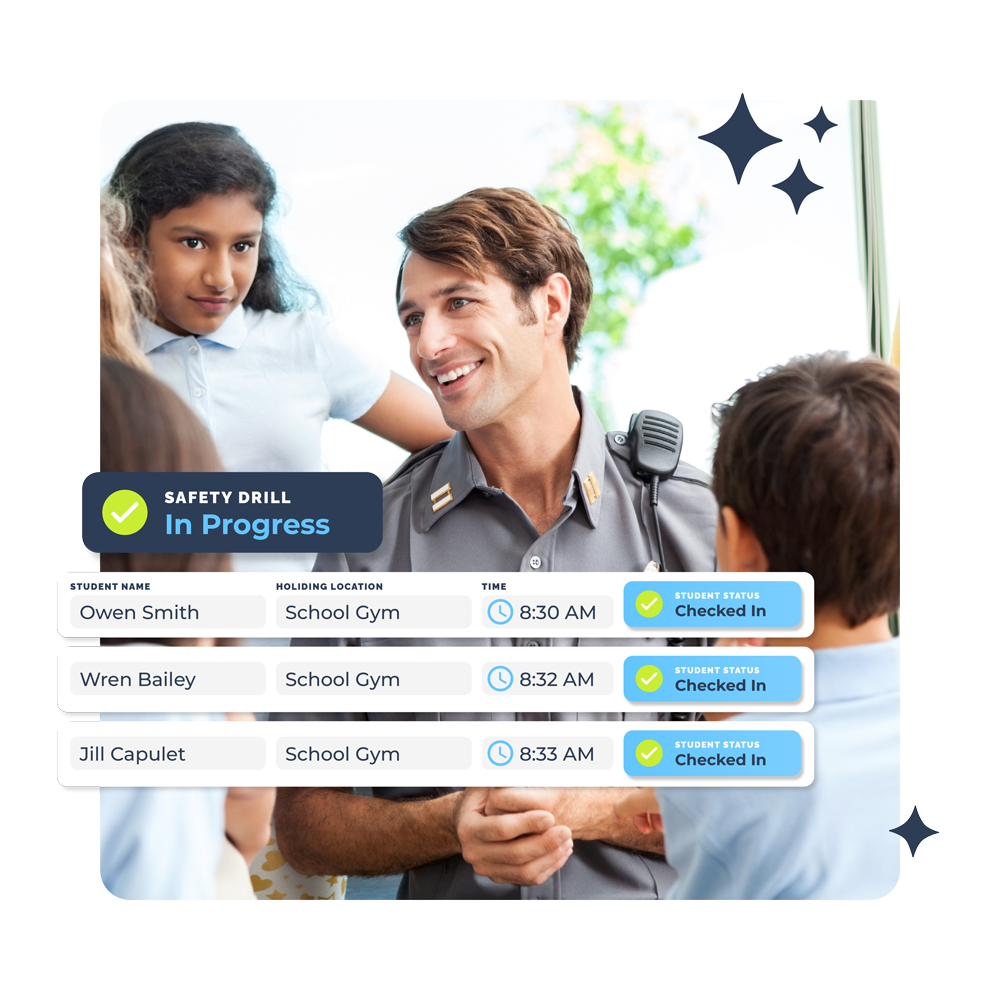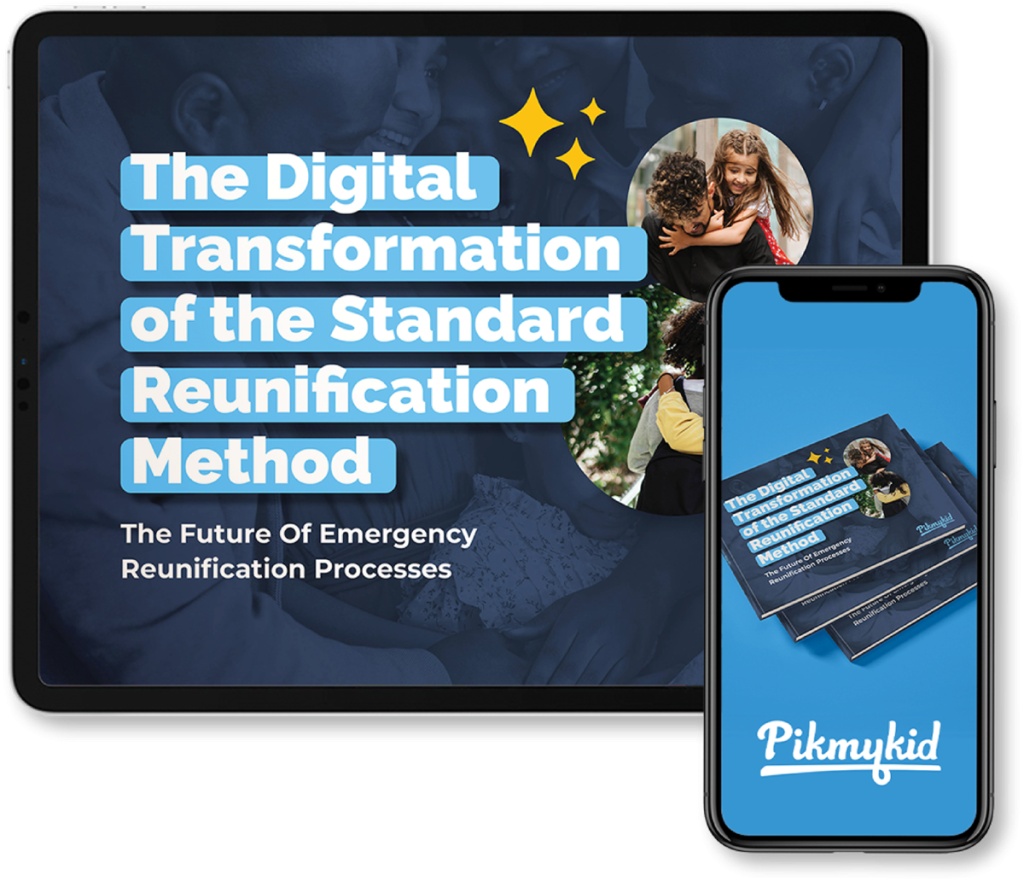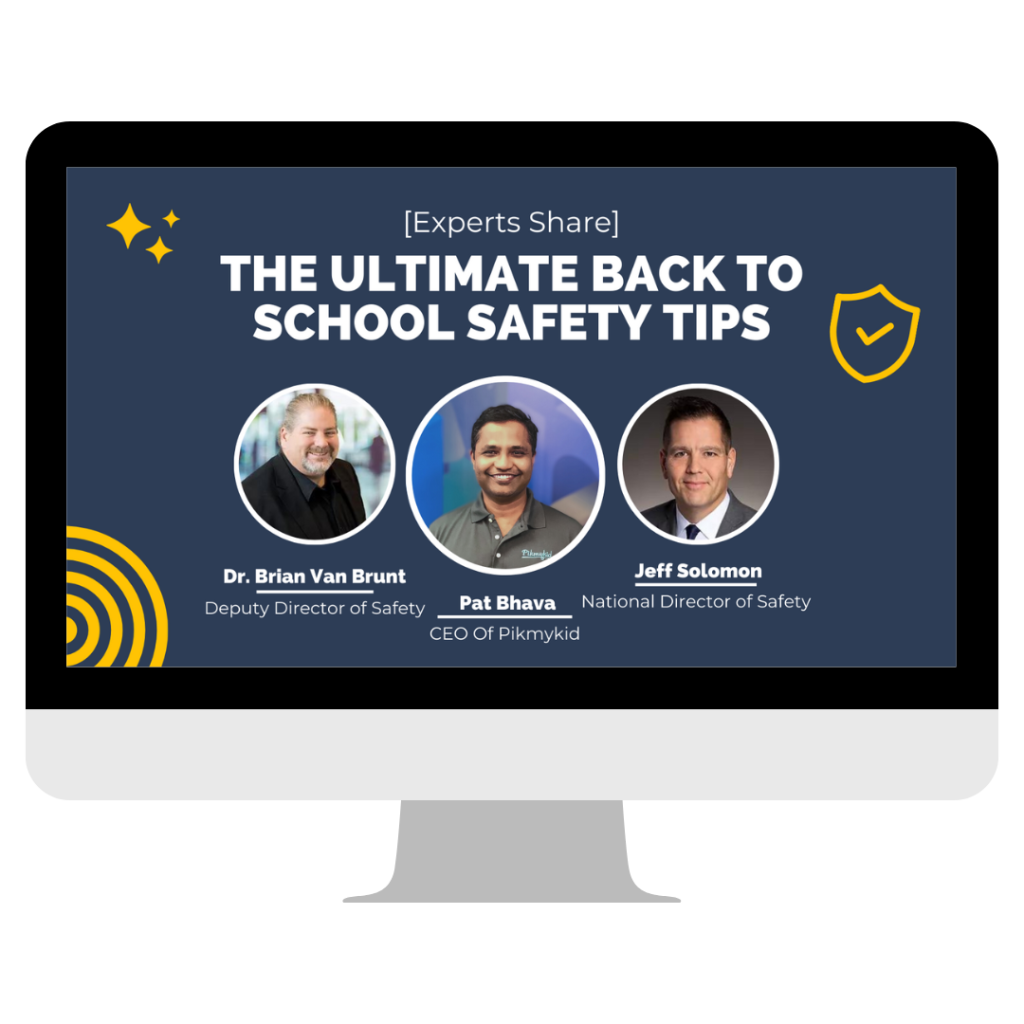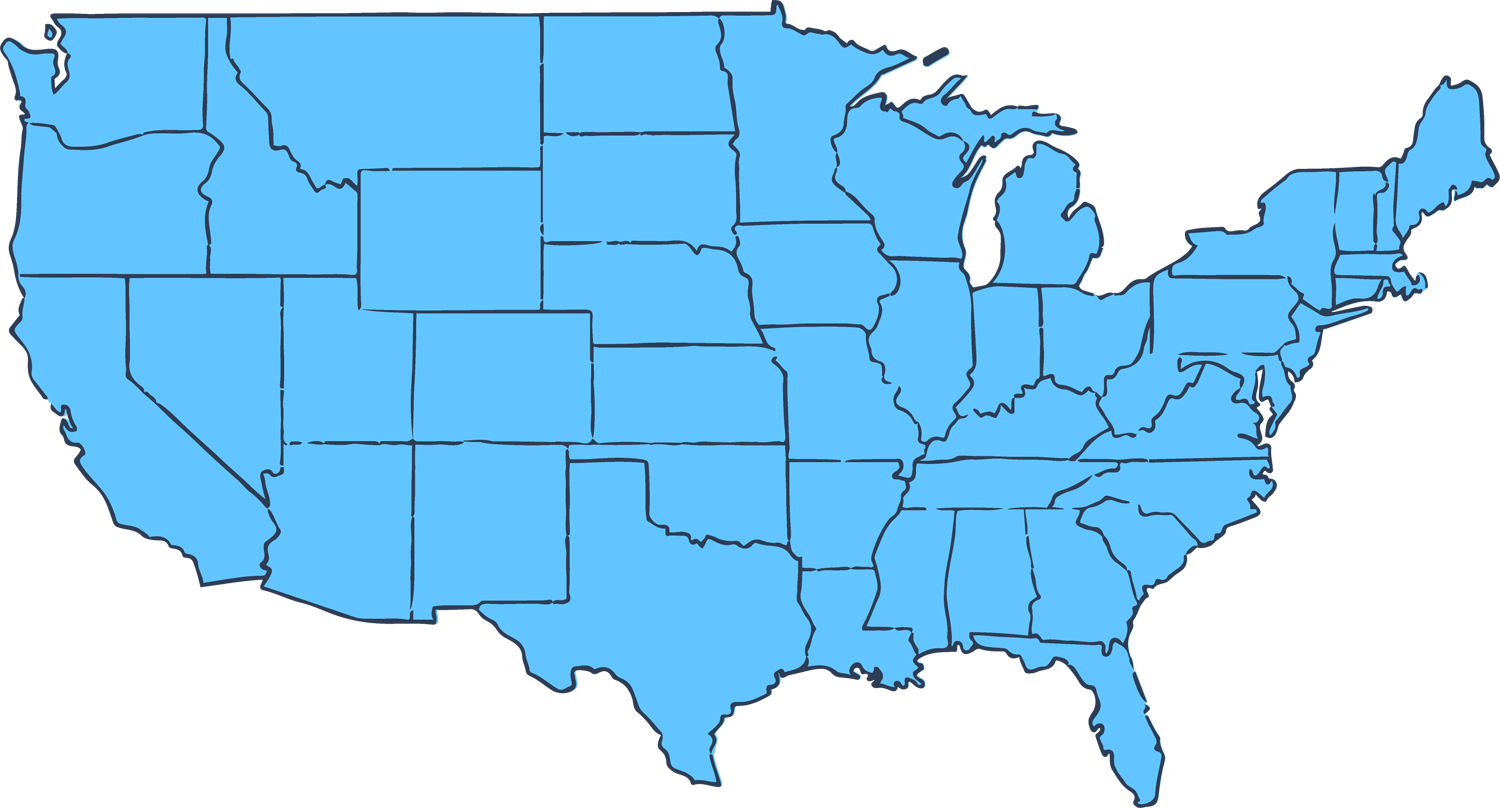

Regulations & Compliance
Conducting Your School Safety Drills
School safety drills are an essential part of ensuring the safety and security of students and staff members. These drills simulate both small and large emergency situations and help everyone in the school understand what to do in case of a real emergency.
Introduction
Best Practices For Conducting School Safety Drills
Federal involvement in school safety and security began in the 1970s. The first federal reports on school safety were released in 1975 & 1978, respectively. The processes and drills have evolved since then and several organizations are involved in the student safety paradigm. The more recent mass school shootings have led to heightened attention on improving emergency planning protocols and drills.
Drills and exercises are part of a more comprehensive approach to ensuring a positive environment for students. Plan, prepare & protect our students and staff should be the key consideration in designing and executing drills.
Pikmykid suggests these 6 steps as best practices for conducting school safety drills, including a quick reference to state mandated drills.

safety drill requirements
Required Safety Drills by State
More States
Most states have mandated school safety drills throughout the school year. Below is a list of safety drills & the frequency with which they’re required to be conducted each year by state, as well as the person who is in charge of enforcing these drills.
For more information on available funding, click on your state above or scroll below.
Alabama
Emergency Drill – 1 per month
Lockdown Drill – 1 per semester
Drill Manager/Lead: Head of School
Alaska
Emergency Drill – 1 per month
Drill Manager/Lead: Head of School
Arizona
Not Identified in Statute
Arkansas
Lockdown Drill – 1 per year
Drill Manager/Lead: Not Specified
California
Drop Procedure – one per quarter – elementary; one per semester – secondary
Drill Manager/Lead: Staff Member
Colorado
All-Hazard Drill
Fire Drill
Table Top Exercises
(frequency determined by school board)
Drill Manager/Lead: N/A
Connecticut
Crisis Response Drill -one every three months, in place of a fire drill
Fire Drill – one per month
Drill Manager/Lead: School Safety Team
Delaware
Lockdown or Intruder Drill -two per year
Tabletop Exercise – one per year
Drill Manager/Lead: School Safety Team
District of Columbia
Not Identified in Statute
Florida
Emergency Drills – one per year of each type
Drill Manager/Lead: School Safety Team
Georgia
School Safety Plan Drill – frequency determined by the Georgia Emergency Management and Homeland Security Agency
Drill Manager/Lead: Not Specified
Hawaii
Not Identified in Statute
Idaho
Evacuation Drill – frequency not specified
Drill Manager/Lead: Not Specified
Illinois
Law Enforcement Drills – one per year
School Evacuation Drills – three per year
Severe Weather and Shelter-in-place Drills – one per year
Drill Manager/Lead: Head of School
Indiana
Active Shooter Drill – one per year
Fire Evacuation Drill -one per month
Manmade Occurrence Disaster Drill – one per semester
Tornado Drill – one per semester
Drill Manager/Lead: Head of School
Iowa
School Safety Plan Drill – one per year (may include a table top exercise, walkthrough, partial drill, or full drill)
Fire Drill – four per year
Tornado Drill – four per year
Drill Manager/Lead: District Board
Kansas
Crisis Drill – three per year
Fire Drill – four per year
Tornado Drill – two per year
Drill Manager/Lead: Head of School
Kentucky
Lockdown Drill – two per year
Severe Weather Drill – two per year
Tornado Drill – two per year
Drill Manager/Lead: Head of School
Louisiana
School Safety Plan Drill – one per year
Drill Manager/Lead: Head of School
Maine
Evacuation Drills
Lockdown Drills -frequency varies by grade level
Drill Manager/Lead: Staff Member
Maryland
Evacuation Drill – one per year
Shelter in Place Drill -one per year
Reverse Evacuation Drill – one per year
Lockdown Drill – one per year
Drop, Cover, Hold Drill – one per year
Severe Weather Drill – one per year
Drill Manager/Lead: Not Specified
Massachusetts
Not Identified in Statute
Michigan
Fire Drill – eight per year
Lockdown Drill – three per year
Tornado Drill – two per year
Drill Manager/Lead: Head of School
Minnesota
School Fire Drill – five per year
School Lockdown Drill – five per year
Tornado Drill – one per year
Drill Manager/Lead: Head of School
Mississippi
Active Shooter with Lockdown/intruder shelter in place
Tabletop Activity and full scale operational based response drills all serving as acceptable Active Shooter drills – two per year
Fire Drill – one per month)
Tornado Drill – two per year
Drill Manager/Lead: Not Specified
Missouri
Not Identified in Statute
Montana
Disaster Drill – eight per year
Drill Manager/Lead: Not Specified
Nebraska
Tornado Drill – two per year
Drill Manager/Lead: Not Specified
Nevada
Emergency Drill – Fire, Lockdown or Other Emergency -one per month
Drill Manager/Lead: Head of School
New Hampshire
All-Hazard Response Drill – four per year
Armed-Assailant Response Drill – one per year
Drill Manager/Lead: Not Specified
New Jersey
Fire Drill – one per month
School Security Drill – one per month
Drill Manager/Lead: Head of School
New Mexico
Emergency Drill – Active Shooter or Evacuation – four per year
Fire Drill – four per year
Drill Manager/Lead: Not Specified
New York
Evacuation Drill – eight Per Year
Lockdown Drill – four Per Year
Drill Manager/Lead: Head of School
North Carolina
Tabletop Exercise – one per year
Drill Manager/Lead: Not Specified
North Dakota
Emergency Drill – frequency not specified
Drill Manager/Lead: Not Specified
Ohio
Emergency Drill – six per year
Drill Manager/Lead: Head of School
Oklahoma
Fire Drill – two per year
School Security Drill – four per year
Tornado Drill – two per year
Additional Safety Drills consistent with the risks assessed by the Safe School Committee – two per year Drill Manager/Lead: Head of School
Oregon
Emergency Drills – 30 minutes per month
At that time, earthquake Drills (two) and safety threat drills (two) must take place. For schools in the tsunami hazard zone, at least (3) drills on earthquakes and tsunamis must take place. Fire drills are also required.
Drill Manager/Lead: Not Specified
Pennsylvania
Fire Drill – one per month
School Security Drill – one or two per year in place of the monthly fire drill
Drill Manager/Lead: Head of School
Rhode Island
Emergency Egress Drill. – one per month*
Evacuation Drill – two per year
Lockdown Drill – two per year
*At least one out of every four emergency egress drills shall be obstructed.
Drill Manager/Lead: Head of School
South Carolina
Active Shooter/Intruder Drill – two per year
Fire Drill – two per year
Severe Weather/Earthquake -two per year
Drill Manager/Lead: Not Specified
South Dakota
Fire Drill -two per semester
Fire, tornado, and other disaster drills are required as a part of the school safety plan.
Drill Manager/Lead: Not Specified
Tennessee
Armed Intruder Drill – one per year
Drill Manager/Lead: School Safety Team
Texas
Emergency Drills – number and frequency determined by Texas School Safety Center and State Fire Marshal
Drill Manager/Lead: Not Specified
Utah
Elementary School:
Emergency Drill – one per month
Other safety or security drill as determined appropriate by school location – alternated with fire drill
Secondary School:
Fire Drill – every two months
Other safety or security drill – every two months*
*Safety and security drills alternate with fire drills Drill Manager/Lead: Not Specified
Vermont
Emergency Preparedness Drill – one per month
Drill Manager/Lead: Head of School
Virginia
Fire drill – three per year
Lockdown drill – two per year
Tornado drill – one per year
Drill Manager/Lead: Not Specified
West Virginia
Not Identified in Statute
Wisconsin
Fire Drill – one per month
School Safety Drill – two per year
Tornado Drill – two per year
Safety drill may be substituted for another type of drill
Drill Manager/Lead: Head of School
Wyoming
Fire Drill – one per month
Safety drills may be substituted for fire drills with approval
Drill Manager/Lead: Head of School
Making The Plan
Create An All-Inclusive Safety Plan
It is essential to develop an all-inclusive safety plan that outlines different emergency scenarios and the appropriate responses. It should also be created with inputs from the Safety & Security Assessment reports, mitigation plans, and all stakeholders (including staff, admin, local law enforcement agencies). This plan should be available in an easy-to-access location for all the stakeholders.
An all-inclusive (or all hazards) safety plan presents a detailed, clear and concise safety process that everyone can follow at a moment’s notice for all types of emergencies. It is ideally managed and leveraged via technology, specifically a cloud-based app with features including the following.
Technology like Pikmykid’s Emergency Alert Software supports your plan with intuitive checklists and reminders that are easily accessed on an app by parents, teachers, and staff alike. This simplifies and streamlines your process, ensuring that everyone is prepared before a critical incident ever occurs.





Checklist & Instructions
Accessibility & Mobility
Plan Of Action
Drill Schedule
Reunification Locations
A customized checklist and instructions for every incident.
Safety plan accessibility as long as you are connected to the internet.
A clear plan that communicates to all concerned parties, including alerts to first responders if needed.
A drill schedule with dates & times, covering arrival through dismissal time and afterschool hours, accessible to both staff & parents.
Three specific locations: one dedicated to student check-in, one for parent check-in, and one for parent/family reunification.

eBook
The Future Of Emergency Reunification Processes
Download your free Digital Transformation Of The Standard Reunification Method eBook to find best practices for a quick & safe reunification practice for your school!
Preparing For Safety Drills
Train All Staff & Students
Once the safety plan is developed, all staff members & students should be trained on what to do in each emergency situation. This training should be conducted regularly to ensure that everyone is familiar with the procedures & can respond quickly and effectively.
Survey your school to establish what is known & understood and what still needs to be learned. Adequate training and knowledge mitigates the severity of a critical situation. Unfortunately, research has shown that when situations escalate it’s often because no one knew what to do when panic ensued.
Place resources in the Emergency Resource Library & in the same location as other tools used, such as an emergency button. That way it is in a more easily accessible location instead of in a binder on a shelf or on a website rarely used.
Train staff to use tools such as the Pikmykid Emergency Alert System for sending critical incident instructions directly to the staff’s personal devices, including a checklist for how to handle a specific emergency until first responders arrive (if needed).
Engage Parents & Guardians
Schools should communicate with parents & guardians about the planned safety drills and the school’s emergency response plan. Not only will this help rebuild trust between the school and parent, this will help parents:
- Stay involved with what their kid is learning during the drills. Tools such as the Pikmykid Parent App provides access to the drill calendars so parents will know when drills are occurring. They can then have a conversation with their kid to reassure them drills are only for practice and emphasize the importance of paying attention & following instructions.
- Confirm their emergency contact information with the school. Many times these drill schedules act as reminders to keep emergency contact information current. Apps like the Pikmykid Parent App save time by negating phone calls and allowing updates to be made quickly online & without errors.
Conduct Realistic Drills
The scenarios used during safety drills should be realistic & based on actual emergencies that could occur in the school. This helps students and staff members understand the seriousness of the situation and the importance of following the proper procedures. It will also enforce the ‘muscle memory’ of the plan so that if something does happen, everyone will be fully prepared.
- Leverage Tech Perform drills leveraging technology that staff & parents already use during daily processes such as daily dismissal. Most schools see remarkable time in savings and are error-free when using the same tools for emergencies as they use for normal, daily activities.
- Practice Communication Effectiveness Planned drills should be announced to staff, students, and parents through channels like Pikmykid parent & staff messaging where daily student arrivals and dismissals are already monitored. This will ensure they see the reminders and have quick access to the school drill calendar.
Test Efficiency & Completion Time
The drills should also focus on the procedures and roles of individuals and departments. The entire process should be completed within 10 to 15 minutes and accomplish the following goals:
- Increase awareness & develop an ‘if-then’ mindset for school staff, building-level employees and district-level administrators.
- Determine if current district and building policies, procedures and practices are adequate related to the practiced incident.
- Regularly update district and school policies for incidents that may occur in your school.
Test Reunification Plans
A reunification plan can be very complex, so it is especially important to lay it out, convey it to all stakeholders & practice frequently during safety drills.
- Test reunification with parent engagement using an easy-to-use reunification app like Pikmykid’s Emergency Reunification tool that has the most current contact information of parents.
- Send preconfigured messages (with a clear notice that “this is a drill”) to parents via app notification, text message & emails through apps like the Pikmykid Parent App they already use for daily pickup schedules & changes.
- Practice parent check-in with ID verification as part of the drill to test the time gap between student check-in and the actual reunification with the parents. Using tools like Pikmykid’s reunification tool with built-in guardian verification, which recognizes and matches parents securely as they arrive, will help speed up the process. Reunifying students with parents quickly is critical in a real emergency to reduce their emotional stress.

Webinar
The Ultimate Back To School Safety Tips Webinar
Watch this on-demand webinar, The Ultimate Back To School Safety Tips, and uncover the most critical safety aspects you need to make your school safer than ever before!
Evaluate Your Plan
Review The Drills & Revise Any Part Of The Process
After each safety drill, it is essential to review & evaluate the drill’s effectiveness. This evaluation should include feedback from staff members & students to identify any areas that need improvement. This review and necessary changes to your emergency plans should occur immediately after the drill occurs so that nothing is forgotten or overlooked.
- Leverage incident checklist tools like Pikmykid emergency instructions to review and update real time changes.
- Update or add emergency notification recipients to the specific emergency notification groups.
- Download the reunification reports and message history to present your data-backed review with your leadership.

we designed the Pikmykid Platform to
help school staff react appropriately
when every second could save lives”
